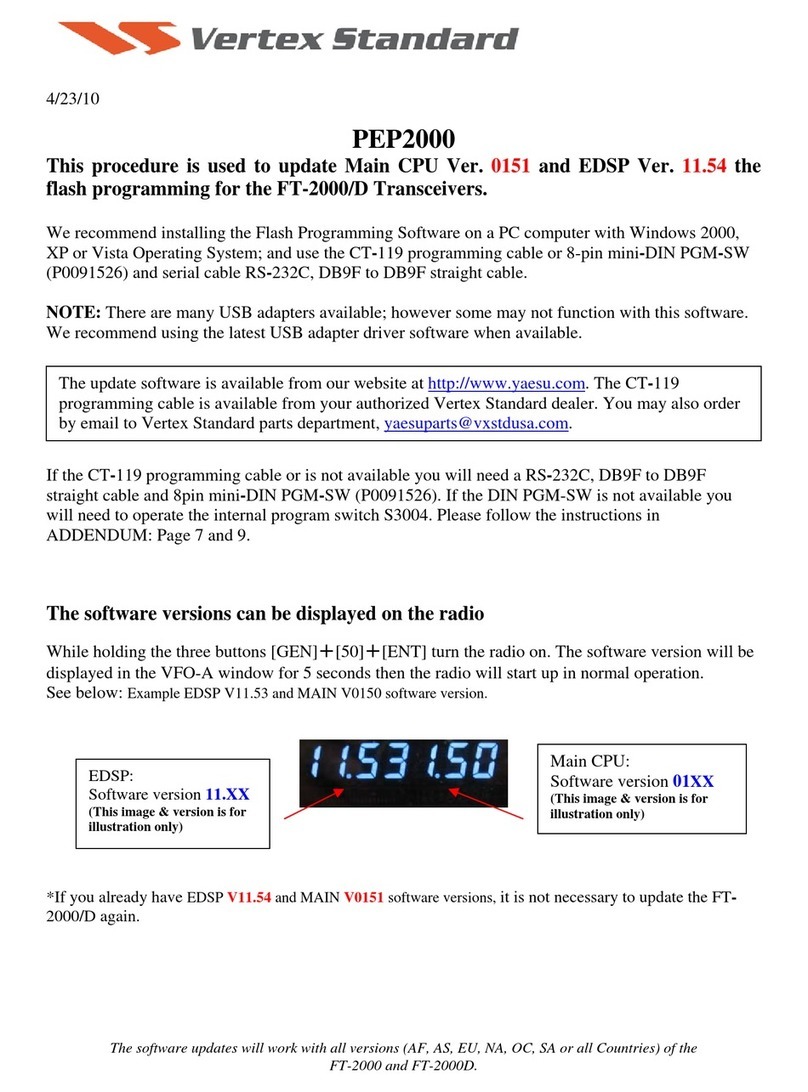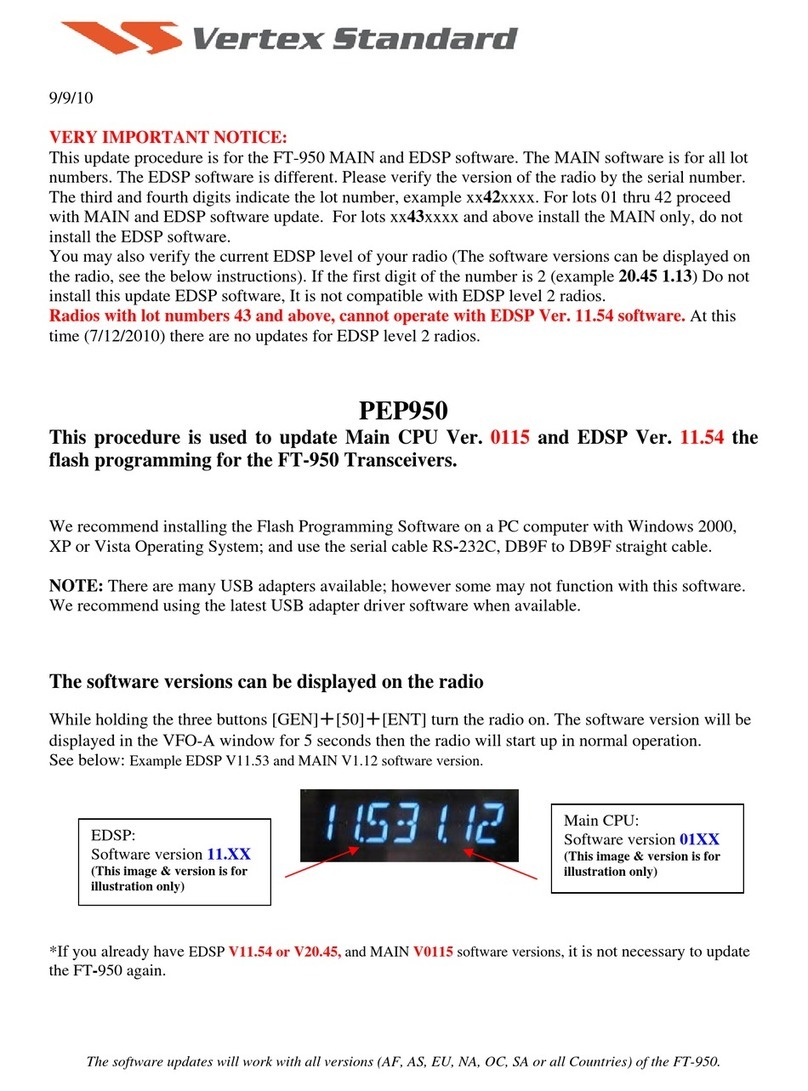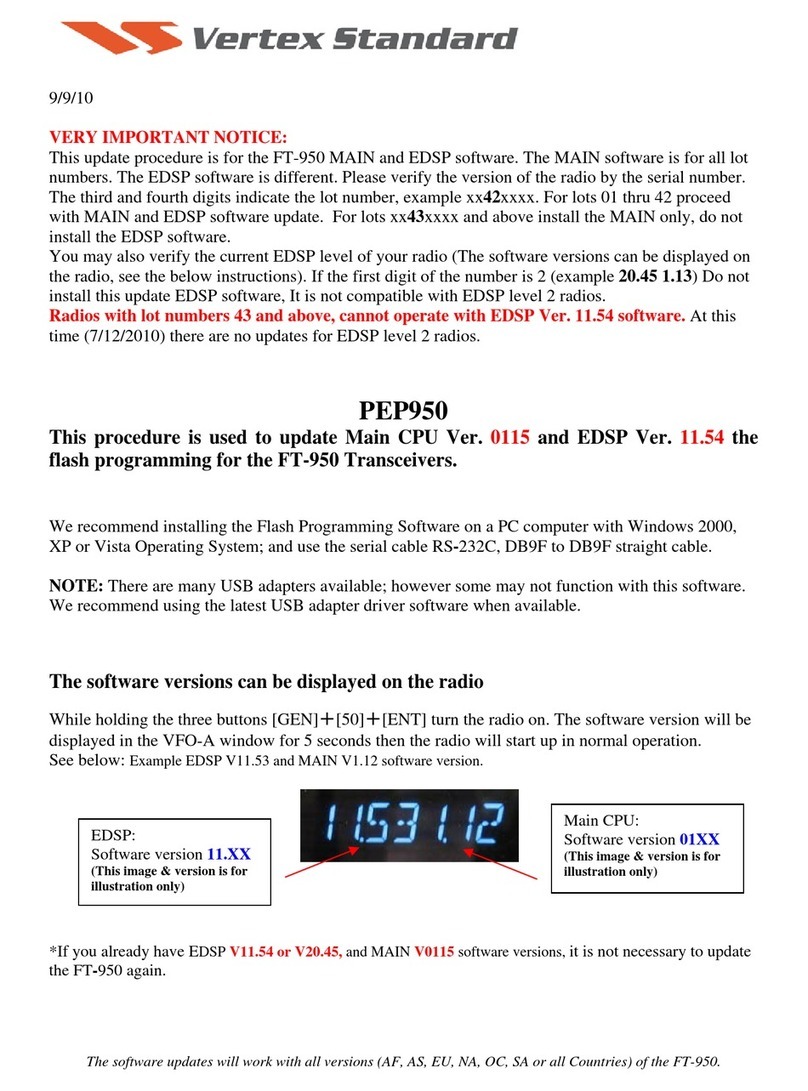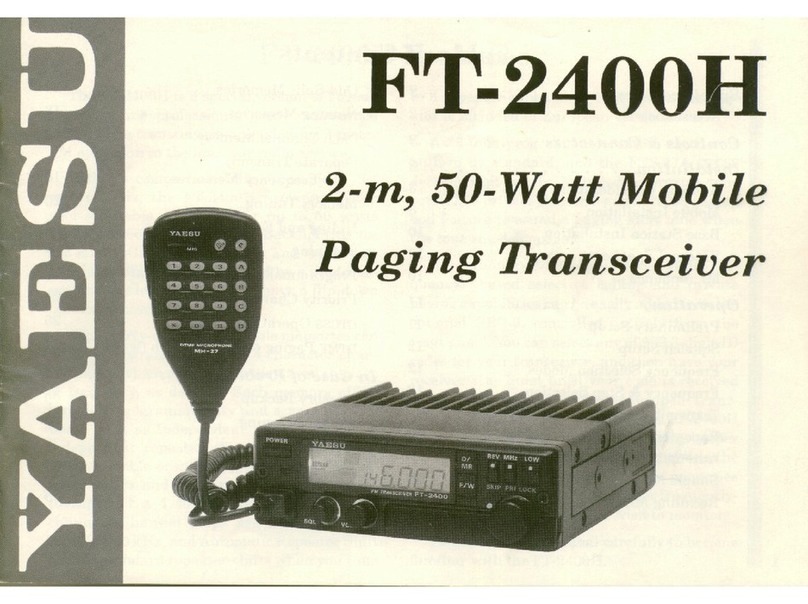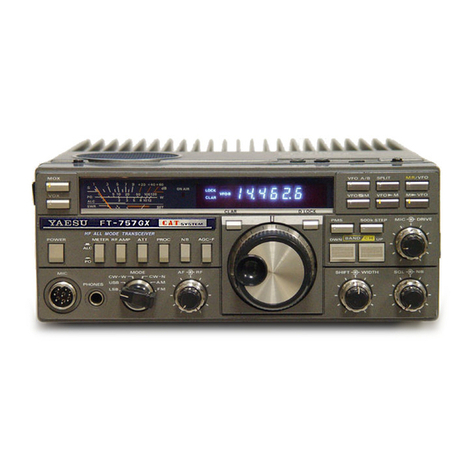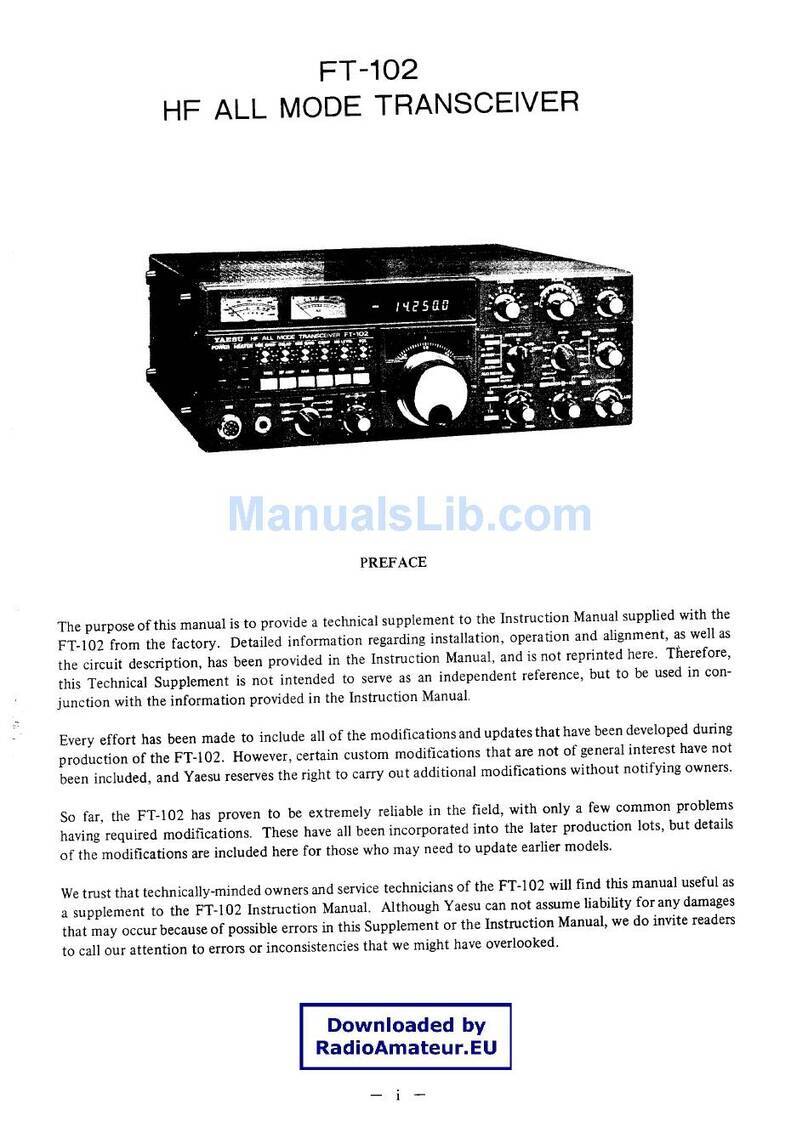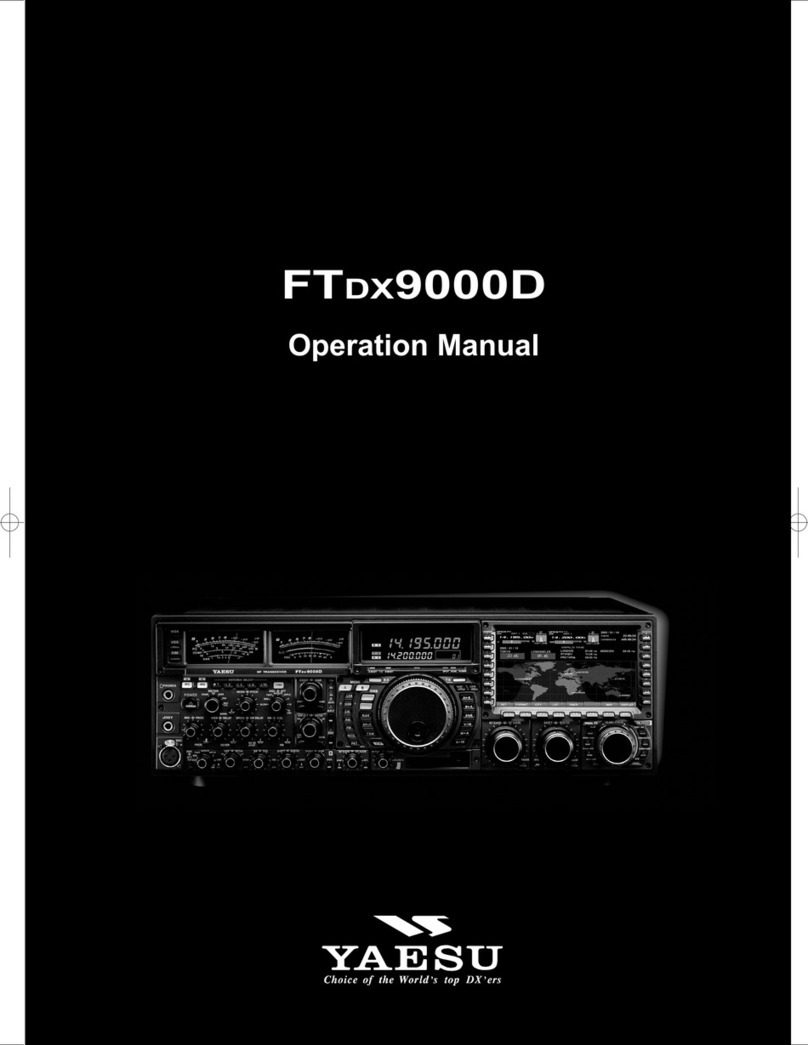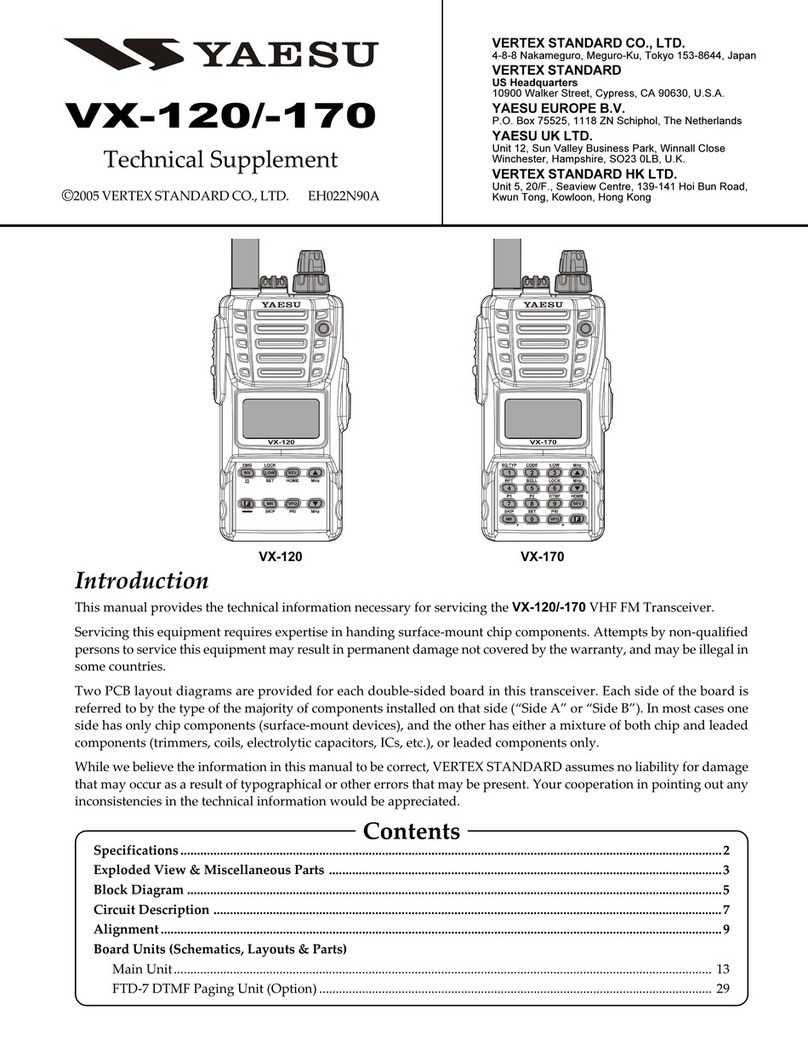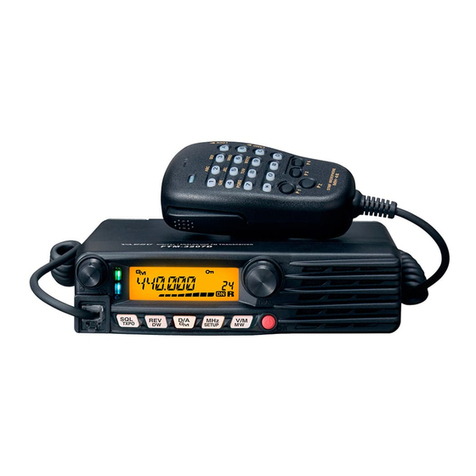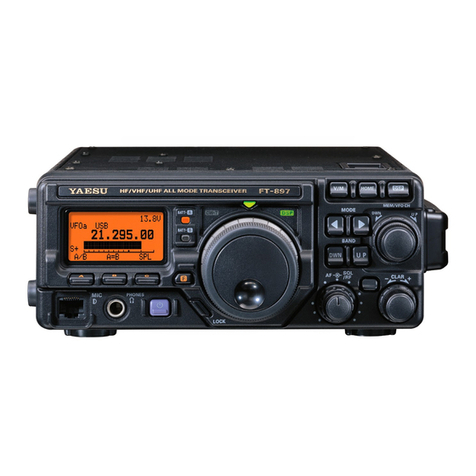
4
Before Use
Contents
Introduction................................................................. 2
Features of this transceiver.................................... 2
About registered trademarks and copyrights ......... 3
How to read this manual ........................................ 3
Before Use................................................................. 5
Safety Precautions (make sure to read these) ........... 5
Checking the supplied items....................................... 9
Name and function of each component.................... 10
Front panel........................................................... 10
Front................................................................ 10
Rear ................................................................ 12
Main body ............................................................ 12
Front................................................................ 12
Rear ................................................................ 13
Microphone (MH-48A6JA) ................................... 14
Screen display ..................................................... 15
Input characters ................................................... 16
Switching the character type ........................... 16
Deleting the input characters .......................... 16
Moving the cursor to the left............................ 16
Moving the cursor to the right.......................... 16
Deleting the most recently input character...... 16
Completing input ............................................. 16
Installation and Connection .................................. 17
Installing the transceiver........................................... 17
Precautions on installation................................... 17
Installation location when used in a mobile unit... 18
About the antenna................................................ 19
Installing the antenna ...................................... 19
Installing the main body ....................................... 20
Installing the front panel....................................... 21
Connecting the transceiver....................................... 22
Connecting the front panel to the main body ....... 22
Connecting the microphone................................. 22
Connecting the antenna....................................... 22
Connecting the power supply ................................... 23
Connecting the car battery .............................. 23
Connecting the external power supply
equipment ....................................................... 23
Basic Operations.................................................... 24
Receiving.................................................................. 24
Turning the power on ........................................... 24
Switching the power off........................................ 24
Inputting the call sign ........................................... 24
Toggling the operating band ................................ 25
Adjusting the volume level ................................... 25
Adjusting the squelch level .................................. 26
Tuning in to the frequency ................................... 27
Changing the frequency steps ............................. 27
Switching the operation mode.............................. 28
Selecting communication mode........................... 29
Switching the modulation mode........................... 30
Communicating......................................................... 31
Transmitting ......................................................... 31
Adjusting the transmit power........................... 32
Communicating in FM mode................................ 32
Communicating using the repeater...................... 32
Tone Calling (1750 Hz).................................... 33
Changing the 100.0 Hz CTCSS tone squelch. 33
Other settings ........................................................... 34
Locking the DIAL and keys .................................. 34
Adjusting the date and time ................................. 34
Restoring defaults (All Reset) .............................. 36
DG-ID and DP-ID Function..................................... 37
Digital Group ID (DG-ID) function............................. 37
Communicating only with the specific members
by setting the DG-ID number except for “00”....... 37
Digital Personal ID (DP-ID) function......................... 39
Registering the DP-ID to a DR-2X
digital repeater ..................................................... 39
Register the transceivers ..................................... 39
Deleting the registered DP-ID.............................. 40
Using the Memory .................................................. 41
Registering to the memory channel ..................... 41
Recalling memories ............................................. 42
Recalling the home channel................................. 43
Changing the frequency of the home channel
... 44
Clearing memories............................................... 45
Naming a memory channel.................................. 46
Displaying the memory tag.............................. 48
Split memory........................................................ 48
Receiving Weather Broadcast Channels
(USA version only) ............................................... 49
Assigning the “WX” function to a
programmable key on the microphone............ 49
Recalling the weather channels ...................... 49
Listening the weather alert .............................. 50
Scanning ................................................................. 51
Searching for signals................................................ 51
VFO scan............................................................. 51
Selecting the receiver operation performed
after scanning stops ........................................ 52
Memory scan ....................................................... 53
Selecting the scanning method ....................... 54
Using the GPS Function ........................................ 55
Using the APRS Function ...................................... 56
What is the APRS (Automatic Packet Reporting
System) function?..................................................... 56
Using the GM Function .......................................... 57
What is the GM (Group Monitor) Function?.............. 57
How to use the GM function ..................................... 57
Using the WIRES-X Function................................. 59
What is the WIRES-X Function? .............................. 59
Convenient Functions............................................ 60
Communicating with specific stations....................... 60
Using the tone squelch function........................... 60
Using the digital code squelch function ............... 60
Using the new pager function .............................. 60
Notification of incoming calls from
partner stations using the bell function ................ 60
Exchanging messages or images............................. 60
Setup menu basic operations................................... 61
Setup-menu listing.................................................... 62
Appendix ................................................................. 68
Optional components................................................ 68
Specifications ........................................................... 69
